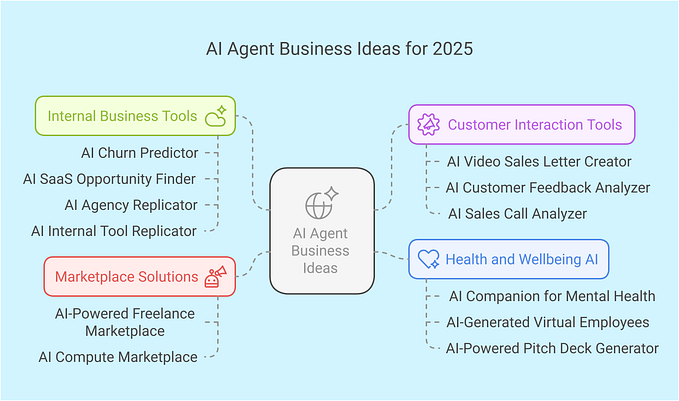What I learned from 100’s of hours studying platform businesses (Platform Building Basics) — Part 1
TLDR: Building a platform requires understanding network effects and solving the “chicken or the egg” problem. It’s necessary to develop a deep understanding of the demand curve for each set of users you serve so you know where and when to apply marketplace growth tactics including: pricing, subsidies, value-adds, exclusivity, and platform openness.
Why build a platform business?

Many of the largest businesses that we interact with day to day are platform oriented such as Microsoft, Apple, XBox, Visa, Uber, Airbnb. Platform businesses tend towards network effect which act to differentiate and protect businesses from competition which in turn yield high profit margins.
Also, platforms lead to significant efficiency and capability gains allowing ecosystems to thrive. More and better platforms may mean that we don’t need Elon’s space ships to escape to Mars ;).
What is a platform?
In construction, a platform is something that lifts you up and on which others can stand. The same is true in business. By building a digital platform, other businesses can easily connect their business with yours, build products and services on top of it, and co-create value.
- Harvard Business Review — Three Elements of a Successful Platform
A platform is a system that connects two or more distinct sets of users (buyers, sellers, searchers, advertisers, riders, drivers, etc) and creates value by making each set of users lives easier. We can also think of a platform as an economic catalyst.
A business is an “economic catalyst” if it creates value by bringing two or more groups of customers together and getting them to interact. Catalysts create value by reducing transactions costs faced by multiple distinct economic agents that would benefit from coming together. Catalysts reduce search efforts, facilitate matching, and make it easier for the two groups of economic agents to exchange value between each other. In the traditional literature, a catalyst is referred to as a “two-sided market” or as a “multi-sided platform.”
- David S. Evans in Platform Economics: Essays on Multi-Sided Businesses
Platforms typically take one of a few forms:
- Market-makers (Airbnb, Uber, Ebay)
- Audience-makers (Google, most publishers, etc.)
- Demand-coordinators (Microsoft, Apple, DVD, Wifi, Paypal, Visa, Amex, Mastercard, Xbox etc.)
- More on platform types here
Or put another way, Alex Moazed of Applico has defined platforms in terms of:
- Exchange platforms
- Maker platforms
and explains the difference as:
…both platforms that create value and generate revenue by facilitating interactions between consumers and producers. But each platform type has a slightly different core value proposition. An exchange platform creates value primarily by enabling direct exchanges between its consumers and producers. In contrast, a maker platform creates value by enabling its producers to make content and broadcast it out to an audience.
— Alex Moazed of Applico

Why should you care?
The key insight to building a successful platform business is to understand that each distinct platform user type (buyers & sellers, transportation seekers & drivers, hosts & guests, users & developers, etc.) can be considered as it’s own market.
And the activity in each of these markets individually strongly affects the other market via the platform. This interplay of market dynamics is what leads to exponential growth curves and is referred to as “network effects”.
In order to understand how the platform yields network effects and delivers this value, it’s helpful to understand some basic economic principles.
Economics 101
Your pizza business

How much should you charge?
Supply and Demand
It helps if we have a model to understand the tradeoffs between price and quantity sold. Fortunately, economics has an illustration called the supply and demand curve which represents the potential demand for your product/service over a range of prices.
If you charge a lot, say $50/pizza, fewer people will buy your pizza but you will have a higher profit margin.

Or you could charge $5 / pizza and sell a high quantity of pizzas for little profit. More people want cheap pizza.

And what we learn is there’s an optimal price somewhere on the curve that allows us to maximize the area of the blue square (price X quantity) in order to get the most possible profit.

The above images represent if your external market stays more or less the same. But markets change over time and the demand curve can shift as well allowing you to charge more customers more money for instance with higher brand value or more people moving to your neighborhood.

Or it can shift out of your favor and shrink your market of customers. For instance, if you get some bad Yelp reviews, people leave your neighborhood, or news comes out about how bad pizza is for you and people act on it.

Now on to the interesting part… Imagine you were to convert your pizza business into a pizzeria platform. You decide to open up the cooking of pizzas (supply-side) to others who love cooking pizza. You convert your kitchen, buy all the supplies and now have to attract not just customers but also cooks. And.. you can’t get one without the other! This is where it get’s tricky.
With a platform business, you have to manage multiple demand curves simultaneously — the supply-side and the demand-side of your platform.

And these demand-curves are tightly linked with change in one demand-curve affecting the other simultaneously. What’s more, business advice tailored to addressing a single market doesn’t always apply and the stakes are higher as platforms are often wildly successful or complete failures.
For example, a traditional marketplace

A traditional marketplace has buyers and sellers each willing (or unwilling) to pay a certain amount to participate in the market.

But if you don’t have any buyers, then it’s hard to attract any sellers and vice versa. The ole’ chicken or the egg problem.

Marketplace Dynamics
To get the market jumpstarted you probably intrinsically understand that you need to get either sellers or buyers. The interplay between demand for sellers and the demand for buyers at your market is called a network effect. Specifically a cross-side network effect meaning that users on one side of the network affect demand for users on the other side.
More buyers = more sellers = more buyers etc.

The key to building a platform is reaching demand-side economies of scale a.k.a. network effects. By creating virtuous cycles you become more differentiated from your competitors and harder to displace.

People who have studied platform business network effects have broken them down into two types: same-side and cross-side.

Cross-side network effects are when users on one side affect users on the other. For instance, if I am a mall owner and more shoppers come into my mall, then it will be easier to convince new mall vendors to pay rent at my mall.
Same-side network effects are when user growth on one side of the platform affects other users on that same-side. A good example of this in marketing is the Net-Promoter Score (NPS). NPS measures your willingness to recommend a product to others. This would be like if shoppers came to your mall and had an incredible time and told all of their friends (positive same-side).
Let’s take a look at some other examples of same-side and cross-side network effects in the matrix below.

And with some thoughtful analysis we can start to think about these cross-side and same-side network effects in terms of the way in which they move the demand-curve(s).

Anyone who desires to build a successful platform company must understand the way the demand-curves shift in response to each other as elucidated in the matrix above. By thinking in terms of the demand-curve on each side of the platform and the dynamics that move the demand-curves, you can start to build a holistic strategy. The authors mentioned in the references at the end of this document have identified a number of tactics for growing platform businesses which is what we will cover in the next post , including:
- Growth strategy
- Getting network effects kickstarted
- Pricing/subsidies
- High value users
- Network value modeling
Part 2 now available here: Platform Building: Multi-sided Platform Growth Tactics — Part 2
Thank you to all those who have done research on platforms and made their research available. A list of some great references were the basis of this post listed here. Also thank you to Sam Johnson for contributing sources and important feedback as well as Bogdan Haiducu and Hallie Benjamin for great feedback.
Please recommend
this article if you found it valuable and let me know if you have feedback, questions or comments!
Twitter @clssmitty
Blog @ http://christopherlsmith.com











